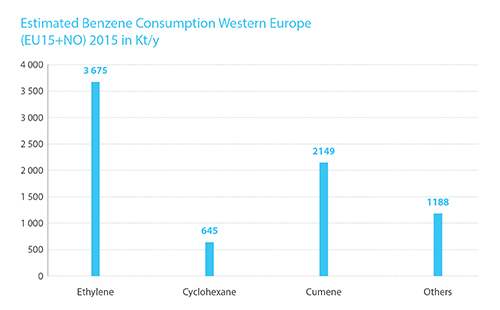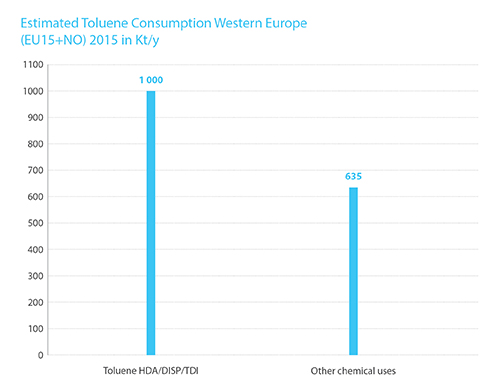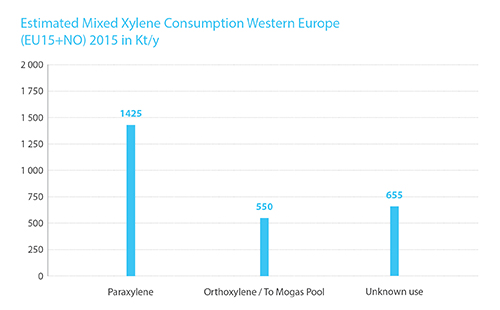Facts and figures
In a nutshell
In 2015 Western European production of aromatics – benzene, toluene and the xylenes – totalled around 12.2 million tonnes.
European production represents one fourth of overall, worldwide production, Asia being the first major consumer and producer for all these products.
The aromatics industry in Europe directly employs around 20,000 people, and around 70,000 work in production of plastics and polymers, which are the principal derivatives of aromatics. The wider industry chain – including machine manufacturers and converters – employs over 1 million people.
The aromatic production sector has a major socio-economic impact in Europe, both in its contribution to Gross Domestic Product (GDP) in EU member states and in providing direct and indirect employment. The raw materials produced by the aromatics industry contribute significantly to the comfort, safety and security of everyday life. (For more, see the section: Aromatics in everyday life.
Aromatics demand and capacity 2015

Benzene Western European capacity was around 9.8 Mt in 2015, with a production of 6.7 Mt. The different sources are:
- Reformate: 31.6%
- Pyrolysis gasoline from stream cracking (pygas): 56.6 %
- On purpose & coal (HDA and TDP): 11.8 %

Toluene capacity in Western Europe was about 2.2 Mt in 2015, where production was 1.8 Mt.

Mixed xylenes capacity in Europe was 4.3 Mt in 2015, when production reached 2.6 Mt the same year.
